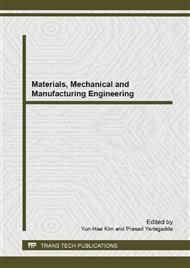p.768
p.773
p.777
p.782
p.788
p.792
p.796
p.801
p.805
Power Transfer Coefficients between Two 3D Semi-Infinite Solids in EFEA Formulation
Abstract:
The energy finite element analysis (EFEA) is more effective for analyzing high frequency vibration problem compared to the traditional finite element method (FEM). When applying the EFEA to complicated structures, it is necessary to obtain power transfer coefficients at structural joints. This paper proposes the theoretical formulations of computing power transfer coefficients between two 3D semi-infinite solids, and demonstrates the validation of the developed theoretical formulations through two examples with different incident waves: dilatational wave and distortional wave.
Info:
Periodical:
Pages:
792-795
Citation:
Online since:
November 2013
Authors:
Keywords:
Price:
Сopyright:
© 2014 Trans Tech Publications Ltd. All Rights Reserved
Share:
Citation:


